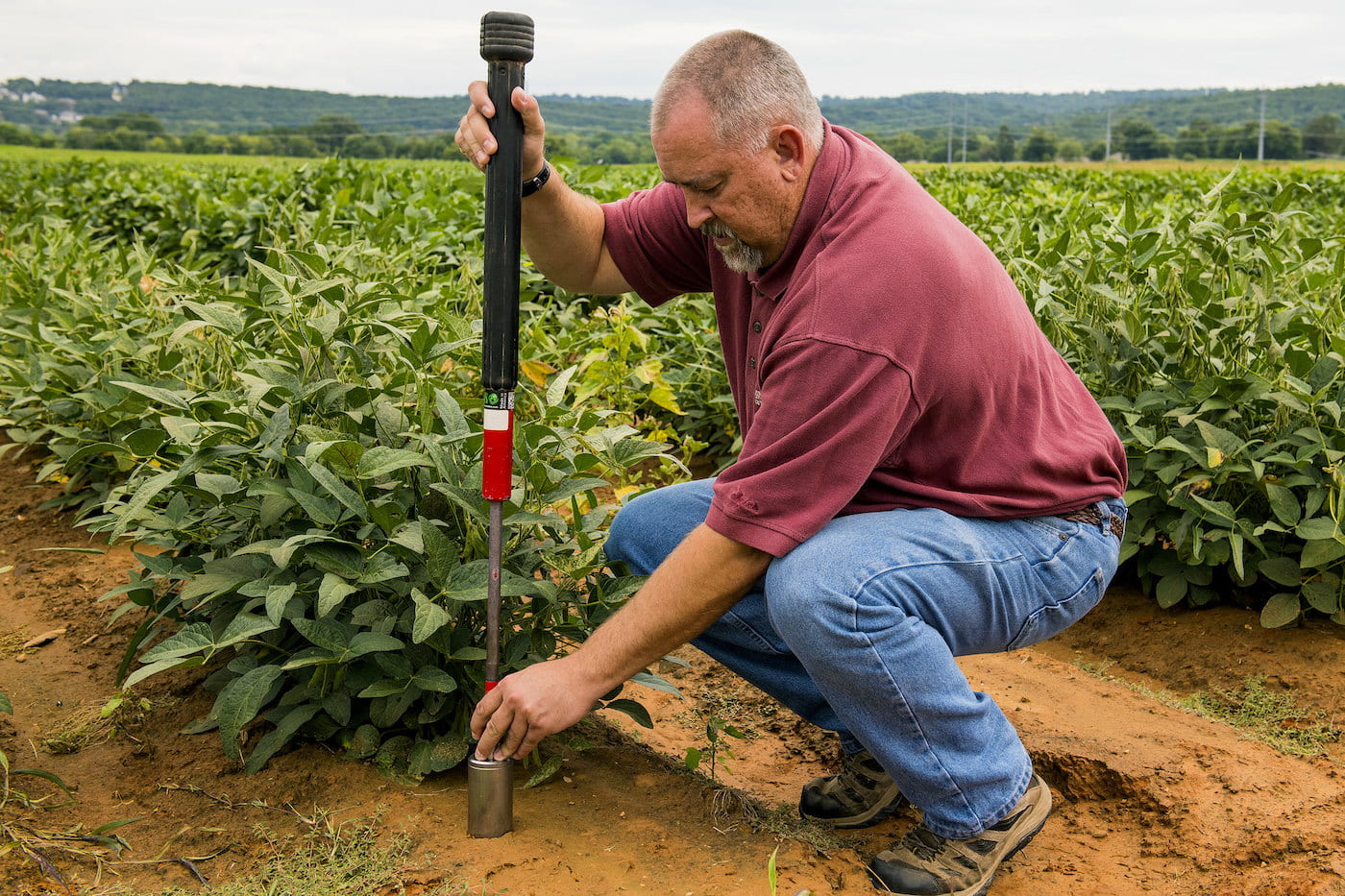Arkansas Researchers Recommend Keeping Residue on the Field for Long-term Benefits

The Problem
Soil scientists with the Arkansas Agricultural Experiment Station say the common practice of burning crop residue after the harvest means lost nitrogen and sulfur, displaced phosphorus and potassium, and less crop residue as food for bacteria and fungi that help build soil aggregates and create slow-release nutrients. While burning crop residue provides short-term benefits for weed control and preparing the seedbed for planting, producers may be missing out on the long-term benefits of keeping residue on the field.
Additionally, despite having some short-term benefits, conventional tillage practices commonly combined with burning crop residue, can induce soil compaction, disrupt soil aggregate stability, and increase soil organic matter decomposition leading to a loss of carbon as carbon dioxide in the long term.
The Work
A continuous 18-year field study by Kristofor Brye, University Professor of applied soil physics and pedology, was conducted at the experiment station’s Pine Tree Research Station near Colt in St. Francis County and the Lon Mann Cotton Research Station in Marianna in Lee County. Data was collected for three years at the Pine Tree station and for 18 years at the Lon Mann station.
For the long-term study, Brye compared the impacts of not burning crop residue combined with conservation tillage and burning crop residue with conventional tillage practices in a wheat-soybean, double-crop production system.

The Results
Total soil nitrogen increased more over time in the no-burn treatment averaged over tillage, residue level and soil depth. Researchers hypothesized that greater levels of total soil nitrogen under the no-burn treatment were partially due to the cumulative effects of crop residue retention on the soil surface.
When not burned, the residue slowly contributed nitrogen to the soil as it decomposed, and mineralization occurred. Brye said these processes could not have occurred to a similar magnitude when most of the surface residue was burned.
If burned, any remaining charred residue is more easily and quickly decomposed to release nitrogen, either easily leached away or quickly taken up by plants. Brye said both of those processes could lower soil nitrogen concentrations.
Although it took a while to see positive soil health benefits with limited tillage and incorporating crop residue, Brye said conservation tillage and not burning crop residue demonstrated many benefits over the long haul, including improved water-holding capacity.
Brye did note some of the challenges related to the no-burn conservation tillage treatment. Weed control — herbicide-resistant ryegrass in particular — was one of the side effects of his no-till plots. Cover crops can aid in weed control, he noted.
Also, crop residue is a habitat for potential pathogens that may have a negative effect on the next crop. To circumvent that, Brye said, is to practice crop rotation: corn to soybean, for example, to break that pathogen cycle. Crop rotation also stimulates diversity in crop residues that will perpetuate a diversity of organisms that create stability among beneficial and non-beneficial organisms, Brye noted.
Brye said that further research is needed to help clarify and solidify the results of this study.
The Value
Carbon and organic matter are critical to soil aggregation, or when soil particles clump together to create spaces in the soil for organisms to thrive. They work as a sponge-like medium for holding moisture. Soils that have stable aggregates are less prone to erosion and can maintain greater levels of soil organic matter and total carbon, by physical protection, due to the decreased erosion, Brye explained.
While there may be challenges and some potential negative effects from conservation tillage, Brye said microbes settle into the new situation after several cropping cycles and provide “a cascade of positive benefits” such as better nutrient cycling, reduced fertilizer demands and improved water infiltration.
It could also save a farmer about $275 per acre. According to Trenton Roberts, professor of soil fertility and testing for the experiment station and an extension soil specialist, nutrients in crop residue from a 200-bushel acre rice crop at 2022 fertilizer prices are worth about $85 in nitrogen, about $30 in phosphorus, about $150 in potassium, and about $10 in sulfur.
About the Researcher

Kristofor Brye
University Professor of Applied Soil Physics and Pedology
B.S., Soil Science, University of Wisconsin-Stevens Point
M.S., Soil Science (Soil Physics), University of Wisconsin-Madison
Ph.D., Soil Science (Soil Physics), University of Wisconsin-Madison
Brye’s research program is focused on applies soil physics and pedology. Brye conducts research on cover crops, carbon sequestration, soil quality and soil health, trace gas emissions from rice and other sustainability and conservation topics.

